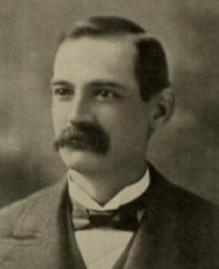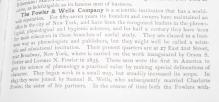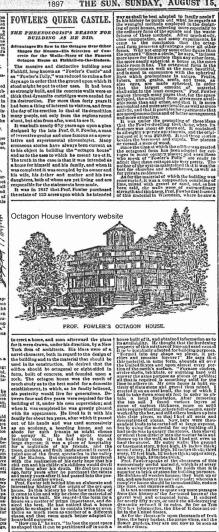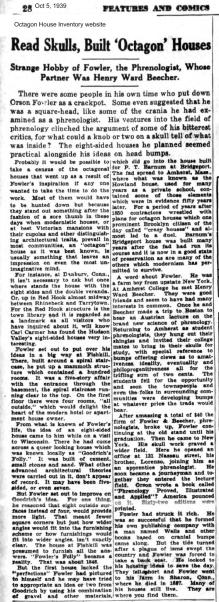



Left click on the images below for larger versions.

|

|

|

|
Best guesses for the dates the photographs above were taken are, top row, left to right, 1848, 1870s, and bottom row, left to right, 1870s, 1880. It's amusing that he looked more 20th century in 1848 than in the decidedly 19th century look of the other photographs. See a brief biography of Orson Fowler.
It's hard to know exactly what motivated Fowler. Popularizing
octagon houses as he roamed New England and the Midwest was just one
of his activities. He was a practicing phrenologist, but one senses he
was as interested in the potential profits as the science and rigor of
the subject. He'd seen traveling Europeans hawk phrenology, and the
reaction of the time was not lost on him. Medicine was primitive in
general in the 1840s, and the public lightly educated and gullible.
So his pitch during his travels included just about anything that
would appeal to his audiences, and one was the health benefits of an octagon
house. Later, a daughter,
Jessie Fowler,
would also practice phrenology
Left click on the images below for larger versions.

|

|
Material above supplied by Suzanne Wray.
Fowler had no training in architecture, and it's unclear just what drew
his attention to the octagon shape. e.g., it could just has well have
been a hexagon or round shape.
Octagon houses existed before Fowler's
time. A number are included in the inventory from the early 1840s. But
they were not common. There were examples in the late 18th century, but
they tended to be the abodes of the rich and well connected, and quite large.
There were many octagon schoolhouses in the Pennsylvania area, built in
the period 1790 to about 1840. Some were converted to use as houses.
It could be that the octagon was just one moderately convenient shape
that would allow the wind to enter the house from essentially all directions.
Fowler wrote a book in 1848 entitled "The Octagon House, a Home for All." In it he makes his case for the octagon shape, and well as stating his objections to more conventional architecture, and gives some construction tips to keep costs low. His vision was that the octagon home would be an inexpensive house for every man. In fact, the houses built during the "Fowler period," which I take to be 1848 to 1865, used the finest hardwoods of the time, and were very large houses in general. They would cost a fortune to build using the same materials today. They do provide a view in all directions, and for that reason are reasonable choices where one does own property with a view. An aside, the book was republished in 1973, 125 years after its original printing, by Dover.
In his early life, Fowler was part of a society that was starved for entertainment, and prone to fads. In and around 1848 the US saw an Egyptian fad. Many old cemeteries in New England and the Midwest still show grave markers with a little obelisk on the top. The outstanding expression of this is the Washington Monument, started in 1848, and finished after the US Civil War.
In later life Fowler started a commune, and today there is the town of Fowler, CO, but it is not a commune. It was an attempt at a very disciplined society that would avoid the pitfalls and drawbacks Fowler saw in much of US society at the time. He also published a book advocating sexual freedom. This proved to be his undoing, and he was henceforth isolated and unwelcome. In a Victorian society, the topic of the book was not a wise choice.
The 4,000 to 5,000 houses that might have been built between 1848 and 1865 are his legacy. Something like 400 exist today, but because they were built something like 150 years ago, and now often find themselves in declining parts of towns and cities, many to most are in bad need of maintenance, and their insides have often been carved up in to apartments. In most cases the porches, and often the cupolas, have long since rotted away, and are too expensive to replace. But there are a number of well maintained homes from the period, giving a glimpse of the fruits of the fad that Fowler headed.
Left click on the images below for larger versions.

August 15, 1897 |

October 5, 1939 |

September 4, 1896 |

Lorenzo N. Fowler |